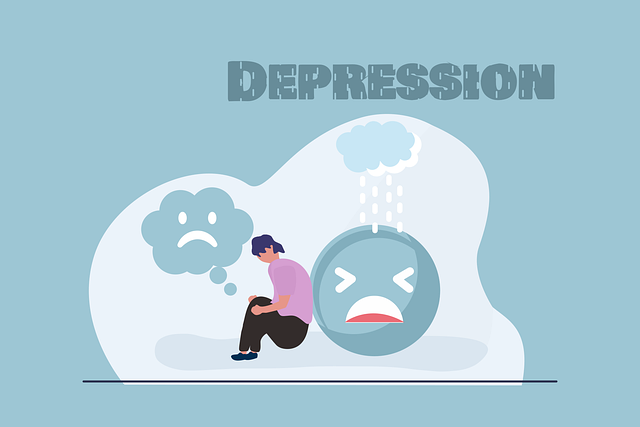Castle Rock Hypnosis Therapy prioritizes safe and effective mental health care through tailored risk management plans, focusing on self-care, communication, and evidence-based practices. They address unique challenges like trauma disclosure and high-risk behaviors, using proactive strategies and innovative techniques to enhance therapy outcomes. By staying current with advancements in mental health education, they revolutionize the field, fostering a nurturing environment for exploration, growth, and long-term mental wellness.
Mental health professionals confront unique challenges, from managing complex client cases to navigating sensitive information. Effective risk management planning is essential to ensure patient safety and foster a healthy work environment. This article guides Castle Rock Hypnosis Therapy practitioners through crucial steps, including understanding specific risks, creating tailored plans, identifying common client-related dangers, integrating evidence-based strategies, and continually adapting practices for optimal safety and growth.
- Understanding the Unique Risks in Mental Health Practice
- Creating a Comprehensive Risk Management Plan
- Identifying and Mitigating Common Client-Related Risks
- Integrating Evidence-Based Strategies for Safety
- Regular Review and Adaptation: Ensuring Continuous Improvement
Understanding the Unique Risks in Mental Health Practice

Mental health professionals encounter a unique set of risks that stem from the inherent nature of their work. They are often the first line of support for individuals grappling with complex mental illnesses, which can include depression, anxiety disorders, post-traumatic stress disorder (PTSD), and other challenging conditions. This means therapists, counselors, and psychiatrists must be adept at managing not only their clients’ symptoms but also the emotional intensity that arises in the therapeutic relationship.
The field of Castle Rock Hypnosis Therapy highlights the importance of addressing these unique risks head-on. Beyond providing effective treatment for mental illness, professionals must prioritize self-care strategies to mitigate burnout and maintain resilience. Crisis intervention guidance is crucial, as therapists may encounter situations involving suicide ideation, violent tendencies, or sudden emotional crises. Furthermore, cultivating emotional intelligence is essential; it enables practitioners to understand their own emotions and those of their clients, fostering a deeper connection and more effective therapeutic outcomes.
Creating a Comprehensive Risk Management Plan

Developing a robust Risk Management Plan is an integral part of any mental health practice, ensuring professionals can provide safe and effective care while mitigating potential risks. For Castle Rock Hypnosis Therapy and similar practices, this plan should be tailored to address unique challenges within the field, such as managing client expectations, maintaining confidentiality, and adhering to ethical standards. A comprehensive strategy involves a multi-faceted approach, including policy development, staff training, and implementation of evidence-based procedures.
This process requires professionals to conduct a thorough Mental Health Policy Analysis and Advocacy, identifying potential risks and implementing strategies to mitigate them. Effective communication is another critical component, ensuring clients are well-informed about their treatment options and potential outcomes. By integrating these Communication Strategies, mental health practitioners can foster trust, encourage open dialogue, and ultimately enhance the effectiveness of their risk management practices, providing a safer environment for both therapist and client during sessions like those offered by Castle Rock Hypnosis Therapy.
Identifying and Mitigating Common Client-Related Risks

Mental health professionals, including those at Castle Rock Hypnosis Therapy, encounter diverse client populations with varying needs and challenges. Identifying and mitigating common client-related risks is an integral part of effective risk management planning. Understanding the potential hazards associated with working with clients, such as disclosure of traumatic experiences or high-risk behaviors, is crucial for maintaining a safe therapeutic environment.
By implementing proactive strategies, therapists can minimize these risks. This includes utilizing evidence-based practices and Emotional Well-being Promotion Techniques to support clients in managing their mental health effectively. Encouraging open communication, setting clear boundaries, and promoting Self-Care Practices among clients are essential to prevent burnout not only in therapists but also in their patients. Through these measures, professionals can ensure a more secure and supportive space for healing, fostering positive outcomes while mitigating potential risks.
Integrating Evidence-Based Strategies for Safety

Integrating evidence-based strategies for safety is a cornerstone of effective risk management planning for mental health professionals. At Castle Rock Hypnosis Therapy, we emphasize resilience building through a multifaceted approach that includes tailored communication strategies and innovative Mental Wellness Podcast Series Production techniques. These methods not only fortify the therapeutic bond between practitioner and client but also equip individuals with tools to navigate challenging situations, fostering mental wellness in both the short and long term.
By prioritizing safety measures grounded in robust research, mental health professionals can enhance their practice’s effectiveness and adaptability. This includes employing coping mechanisms that promote self-care for practitioners, ensuring secure data management, and facilitating open dialogue around sensitive topics. Through these strategies, mental health professionals can create a nurturing environment that encourages exploration, growth, and recovery, ultimately reflecting the mission of Castle Rock Hypnosis Therapy to revolutionize mental wellness practices.
Regular Review and Adaptation: Ensuring Continuous Improvement

Mental health professionals must regularly review and adapt their risk management plans to ensure continuous improvement in patient care. In a dynamic field like Castle Rock Hypnosis Therapy, where techniques and research evolve rapidly, staying current is essential. Regular reviews allow practitioners to incorporate new insights from mental health education programs design and coping skills development initiatives, enhancing the effectiveness of their strategies.
By committing to ongoing learning and adaptation, professionals can better navigate the complexities of individual patient needs. This proactive approach not only boosts confidence but also ensures that risk management plans remain relevant and aligned with best practices, ultimately contributing to positive patient outcomes.
Mental health professionals, much like navigators in a complex landscape, must constantly assess and manage risks to ensure their well-being and effective practice. By understanding the unique challenges of their field—as highlighted by Castle Rock Hypnosis Therapy’s risk management strategies—therapists can create robust plans that mitigate potential harms. This includes identifying common client-related risks, integrating evidence-based safety strategies, and regularly reviewing and adapting their approach to reflect evolving best practices. Through these proactive measures, mental health professionals can foster a safer, more resilient practice environment, ultimately enhancing the quality of care they provide.














